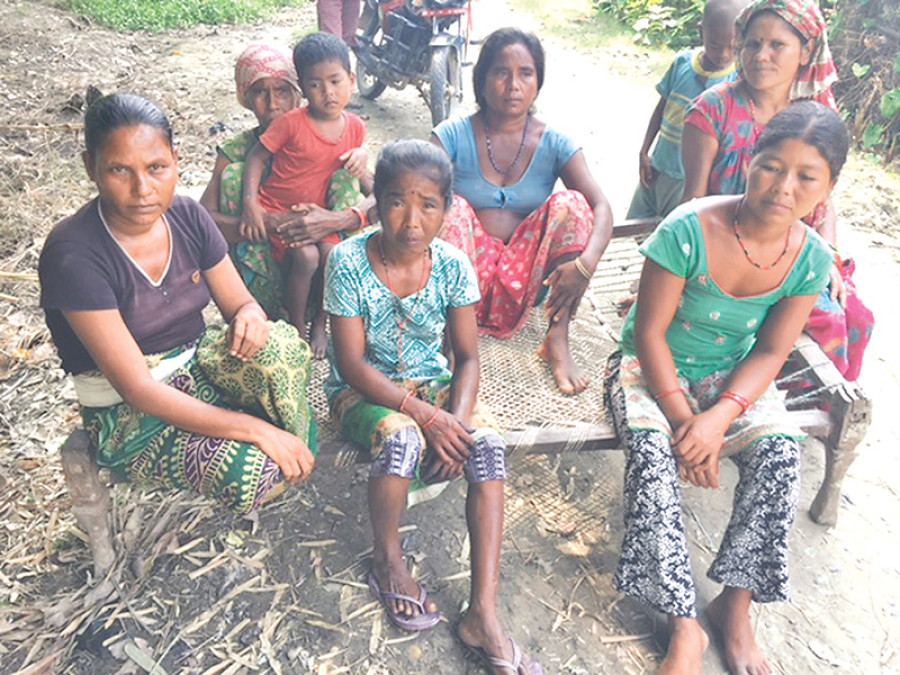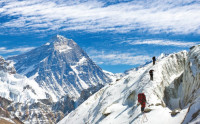Sun, Jan 11, 2026
Opinion
A vanishing way of life
The Sonaha have been forced to give up their worldview and way of life to “become like us”
bookmark
Shradha Ghale
Published at : March 27, 2018
Updated at : March 28, 2018 16:06
Plenty of studies have shown how mainstream conservation aims to protect “biodiversity hotspots” but undermines the knowledge and culture of the people, often the poor and marginalised, who inhabit such hotspots. Indigenous fishing communities of Nepal provide just one example.
The Sonaha are a minority fishing community spread across Bardiya, Kailali and Kanchanpur districts. Their total population is just over 1,200. Most of them live in villages along the Geruwa River, a branch of the Karnali that marks the western boundary of Bardiya National Park, the largest protected area in the Tarai.
A history of dispossession
In a series of articles written over the space of a decade, Sudeep Jana has shown how the Sonaha have gradually been stripped of their land, livelihood and culture. Based on oral testimonies, Jana surmises that the Sonaha’s relationship with the riverine landscape predates the formation of the Nepali state. The Sonaha fished and mined alluvial gold dust for a living. For generations they led a semi-nomadic life, moving from one spot along the river to another. They had no concept of private land ownership. The lower Karnali river delta was their customary territory, a place that fostered their distinct identity and culture.
In 1969 the territory was declared a royal hunting reserve for the entertainment of Nepal’s ruling elite. As global environmentalism gained momentum and Nepal began to receive international aid for conservation, the area was rebranded first as a wildlife reserve and then as a national park. The Sonaha were barred from the river that had sustained them for generations. Their traditional livelihood was criminalised. Army and park authorities harassed and beat them for gathering resources for survival. Several landless Sonaha families were forced to become bonded labourers; many others migrated to India.
In 2008, after relentless pressure from the Sonaha community and civil society activists, the Bardiya park administration issued fishing permits for the Sonaha in the buffer zone (Sonaha outside the buffer zone were not included). The permit came with numerous restrictions: the Sonaha could only fish during the specified period of the year; they had to carry the permit while fishing; they could not fish at night (the ideal time for fishing); only certain types of fishing equipment were allowed; only one member of the household was given a permit and only that particular individual was allowed to fish. Still, obtaining fishing permits was an important achievement for the Sonaha.
But a few months later, two Sonahas from Manau VDC were arrested for their alleged involvement in rhino poaching. Locals of Manau say they were mere pawns in the game of big smugglers. Following this incident, the park cancelled the fishing permits of the entire Sonaha community in the buffer zone. The collective punishment was a big blow to the Sonaha, who had only just obtained permits after a long struggle. The Sonaha have since been struggling for their fishing rights.
In the name of conservation
Conservationists advocate for a ban on fishing in order to protect the Gangetic river dolphins (an endangered species on the IUCN’s red list) found in some of the major rivers of Nepal. They say the river should have enough fish for the dolphins to feed on. For example, in 2006 WWF Nepal raised an alarm about the declining population of dolphins and stressed the need to minimise fishing pressure on the Karnali, despite acknowledging that fishing is a traditional occupation of the indigenous Tharu and Sonaha people in the region.
But studies have shown that indigenous fisher folk who use simple fishing equipment are not the main cause behind the decline of the population of dolphins. The more serious risks are associated with decreased water levels and irrigation demands, and the construction of dams. A 2016 study in the Karnali found that most fisher people only own one fishing vessel, and they fish to support their families rather than to start a commercial fishing business. Building a high dam, however, would pose a serious threat to the dolphins in the river. And yet it is the Sonaha who are denied access to the river in the name of conservation.
In a 2005 article, Andrea Nightingale argues that “expert” knowledge dominates Nepal’s forestry and “educated elites” use such knowledge as an instrument to control forest management. The Sonaha’s knowledge of the environment and their longstanding relationship with the river is considered irrelevant to conservation plans and policy making. Instead, conservation organisations routinely highlight local people’s “lack of awareness” as a problem that needs to be addressed.
The Sonaha community leaders are aware that as an indigenous community, they have certain rights guaranteed by global instruments like ILO 169. But they can’t invoke such rights as they are yet to be recognised as an indigenous group. This in itself speaks volumes about the extent of their marginalisation. According to Sonaha community leaders, when the government prepared the official list of Adivasi Janajatis in 2002, the Sonaha were subsumed under the Tharu category instead of being listed as a separate group. “We have our own language, customs and way of life,” says Ghumlal Sonaha of Rajipur, Bardiya, “but there was no one to raise our issue at the central level, so we were left out.”
Excluded from the official list, the Sonaha have been deprived of even the few benefits reserved for marginalised groups. For instance, prior to the 2017 local elections, caste/ethnic groups that made up less than 0.5 percent of the population were designated as minorities to ensure their representation in village and municipal assemblies. But the Sonaha, despite having a population size that fits this description, were not included in this list. Sujan Sonaha, a bright and articulate young man from Manau, says he was the first in his community to pass the SLC in 2009. He wanted to apply for a quota scholarship at a government-run technical school, but was deemed ineligible because he didn’t officially qualify as a member of a marginalised group. He lacked the means to continue his studies. Today he has no job, no college degree and no career prospects. He cannot fish for a living like his ancestors did.
“These folks aren’t like us”
In Indra Bahadur Rai’s novel Aaja Ramita Chha (translated into English by Manjushree Thapa), a Pahadi landowner Dharmaprasad-jyu expresses his amused bewilderment about the indigenous fisher people in the Tarai: “These folks aren’t like us...They’re not at all concerned about the future. They die of joy at the very mention of fishing. They head out for three or four days, and return with a fish the size of your pinkie finger. What can you say?” Dharmaprasad-jyu is able to exploit their labour and prosper in life, whereas the fisher folk, who “aren’t like us,” are gradually dispossessed and impoverished.
Many people I came across in Bardiya echoed Dharmaprasad’s views. The Sonaha were described as being carefree, irresponsible, passive, naïve, uninterested in progress, and ridiculously fond of fishing.
Speaking of Adivasis in India, Arundhati Roy wrote: “The first step toward re-imagining a world gone terribly wrong would be to stop the annihilation of those who have a different imagination—an imagination that is outside of capitalism as well as communism. An imagination which has an altogether different understanding of what constitutes happiness and fulfilment.”
There is no place for such imagination in the current development and conservation discourse. Today the Sonaha are poor, landless and struggling to protect their livelihood and identity. Armed guards in Bardiya National Park often harass and beat them simply for lingering around the river. Their boats get smashed and their fishing nets confiscated. Some are languishing in jail for alleged wildlife crimes; others have had to take loans to pay fines. The future of the younger generation looks bleak. Many other communities who have long lived off the forest and river, such as the Majhi, Bote, Musahar and Malaha, suffer the same fate. The only option they have been given is to forsake their way of life and try to “become like us”.
Ghale, a former op-ed editor at the Kathmandu Post, is a freelance writer
Most Read from Opinion
Editor's Picks
E-PAPER | January 11, 2026
×




 4.99°C Kathmandu
4.99°C Kathmandu











